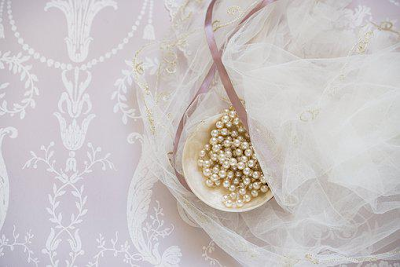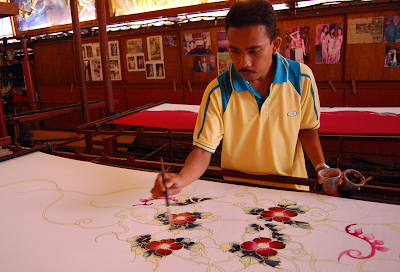Featured
- Get link
- X
- Other Apps
AO DAI
The ao dai (meaning "long shirt"; pronounced "ow zai" in the north, "ow yai" in the south) is a long tunic with a close-fitting bodice, mandarin collar, raglan sleeves, and side slits that form front and back panels from the waist down, as well as wide-legged trousers, frequently cut on the bias.
While both men and women wore ao dai in the past, it is now almost entirely a woman's clothing in the twenty-first century.
The ao dai is a popular uniform worn by public servants, tour guides, hotel and restaurant employees, and high school students.
It is also worn during weddings, religious rites, and other events.
The ao dai, which is often associated with traditional Vietnamese identity and femininity, really has a limited history defined by foreign influence.
History Of Ao Dai
The ao dai is a great illustration of how Vietnamese people have adapted components of other cultures to make them truly Vietnamese in response to both Chinese and French colonization.
Prior to the fourteenth century, Vietnamese women wore a halter top and a skirt (vay) (yem).
An open-necked tunic (ao tu than) with four long panels, the front two knotted or belted at the waist, was occasionally worn over them.
Women's clothing was mostly brown or black, with vividly colored tops or belts added for special occasions.
China's Ming Dynasty ruled Vietnam from 1407 to 1428, forcing women to wear Chinese-style trousers.
Vietnam's Le Dynasty (1428–1788) chastised women's clothes for breaking Confucian rules of decorum after regaining independence.
Skirts and halter tops remained the standard despite the regulations' inconsistent implementation.
Vietnam was separated into two parts throughout the seventeenth and eighteenth centuries, with the Nguyen dynasty governing the south.
Nguyen rulers forced southern men and women to wear Chinese-style pants and long, front-buttoning tunics to differentiate themselves from northerners.
On aesthetic and moral grounds, the austere Confucian Emperor Minh Mang (r.
1820–1841) outlawed women's skirts (vay) when the Nguyen dynasty took control of the whole kingdom in 1802.
Precursors to the current ao dai gained popularity in towns, at the royal court in Hue, and during vacations and festivities in the countryside throughout the following century.
Pants and a loose-fitting shirt with a stand-up collar and a diagonal fastening that ran down the right side from the neck to the armpit, both elements influenced by Chinese and Manchu clothes, were worn with some regional variations.
Elites often stacked multiple ao dai of various hues, leaving the neck free to show off the layers.
The vay and yem, on the other hand, remained popular among peasants and workers.
Vietnamese intellectuals and a burgeoning urban bourgeoisie struggled to absorb progressive features of Western modernity while fighting colonialism and preserving some aspects of Vietnamese history under French colonialism (1858–1954).
During the 1930s, Hanoi artist Nguyen Cat Tuong, popularly known as Lemur, debuted ao dai fashions influenced by French fashion as part of Tu Luc Van Doan's (Self Reliance Literary Group) attempts to construct a contemporary "new lady."
Longer panels, puffy sleeves, asymmetrical lace collars, buttoned cuffs, scalloped hems, and darts at the waist and chest were all features of the light-colored, close-fitting tunics, which necessitated the use of a brassiere or corset.
White Europeanized flared pants with tightly contoured hips were worn by Lemur.
Conservatives criticized Lemur's designs as scandalous, but they did herald the rise of a contemporary ao dai that combined traditional Vietnamese components with Western tailoring and physical aesthetics, similar to the Chinese cheongsam of the time.
With the split of Vietnam into North and South in 1954, French colonialism came to an end.
Although communist officials in North Vietnam denounced the ao dai as bourgeois, colonial, and unsuitable for hard work, women continued to wear it on special occasions.
Meanwhile, in capitalist South Vietnam, the garment was still being experimented with.
Madame Nhu (Tran Le Xuan), President Ngo Dinh Diem's sister-in-law, was famous in the 1950s and 1960s for her ao dai with skin-baring open necklines.
Two Saigon tai lors also altered the ao dai to add raglan sleeves, which reduced wrinkling around the shoulders and armpits.
Revival Of Ao Dai Clothing And Fashion
The Vietnam War came to an end in 1975, when the North and South were reunited under communist authority.
Leaders slammed the southern ao dai as luxurious and advocated for more practical, utilitarian clothes.
However, austerity was only temporary.
By the 1990s, economic reforms and rising living standards had resurrected the ao dai in Vietnam, as well as increased worldwide recognition of it as a symbol of Vietnamese identity.
The inaugural Miss Ao Dai event was held in 1989 at the Women's Newspaper in Ho Chi Minh City (formerly Saigon).
Miss Vietnam's blue brocade ao dai received the medal for best national costume in the Miss International Pageant in Tokyo six years later.
In several cities and towns, simple white ao dai have been reestablished as uniforms for female high school students, while Viet Nam Airlines flight attendants wear red ao dai.
Both ornamentation and shape have seen recent innovation.
Others vary the tunic by opening necklines, removing sleeves, or replacing the long panels with fringe, while designers Si Hoang and Minh Hanh use innovative fabrics, abstract designs, and ethnic minority patterns, while others open necklines, remove sleeves, or replace the long panels with fringe.
White trousers, which were formerly considered scandalous, are now considered outdated, and urban women prefer pants that are the same color as the tunic.
Despite the fact that most Vietnamese women dress in Western clothing on a daily basis, the ao dai enables the fashion-conscious to be both fashionable and traditional on special occasions.
Ao Dai's Influence on a Global Scale.
When the ao dai went out of favor in communist Vietnam, Vietnamese immigrants in the US, Canada, Australia, and France kept it as a sign of their cultural history.
Ao dai may be seen at fashion displays, Tet (Lunar New Year) festivals, weddings, and musical events all throughout the diaspora, which numbered almost 2.5 million people in 2003.
The ao dai, like the Chinese cheongsam and the Japanese kimono, has influenced non-Asian designers.
Ralph Lauren, Richard Tyler, Claude Montana, and Giorgio Armani all launched ao dai–inspired collections after the 1992 films Indochine and The Lover, both set in the French colonial era.
While "Indo-Chic" designs may be Orientalist in their celebration of a modest, seductive, and exotic Vietnamese femininity, they are generally accepted in Vietnam as proof that the ao dai has joined the world fashion canon.
The ao dai's resurgence in Vietnam in the twenty-first century is due as much to its newly trendy position as it is to its historical roots.
References And Further Reading:
- Get link
- X
- Other Apps














